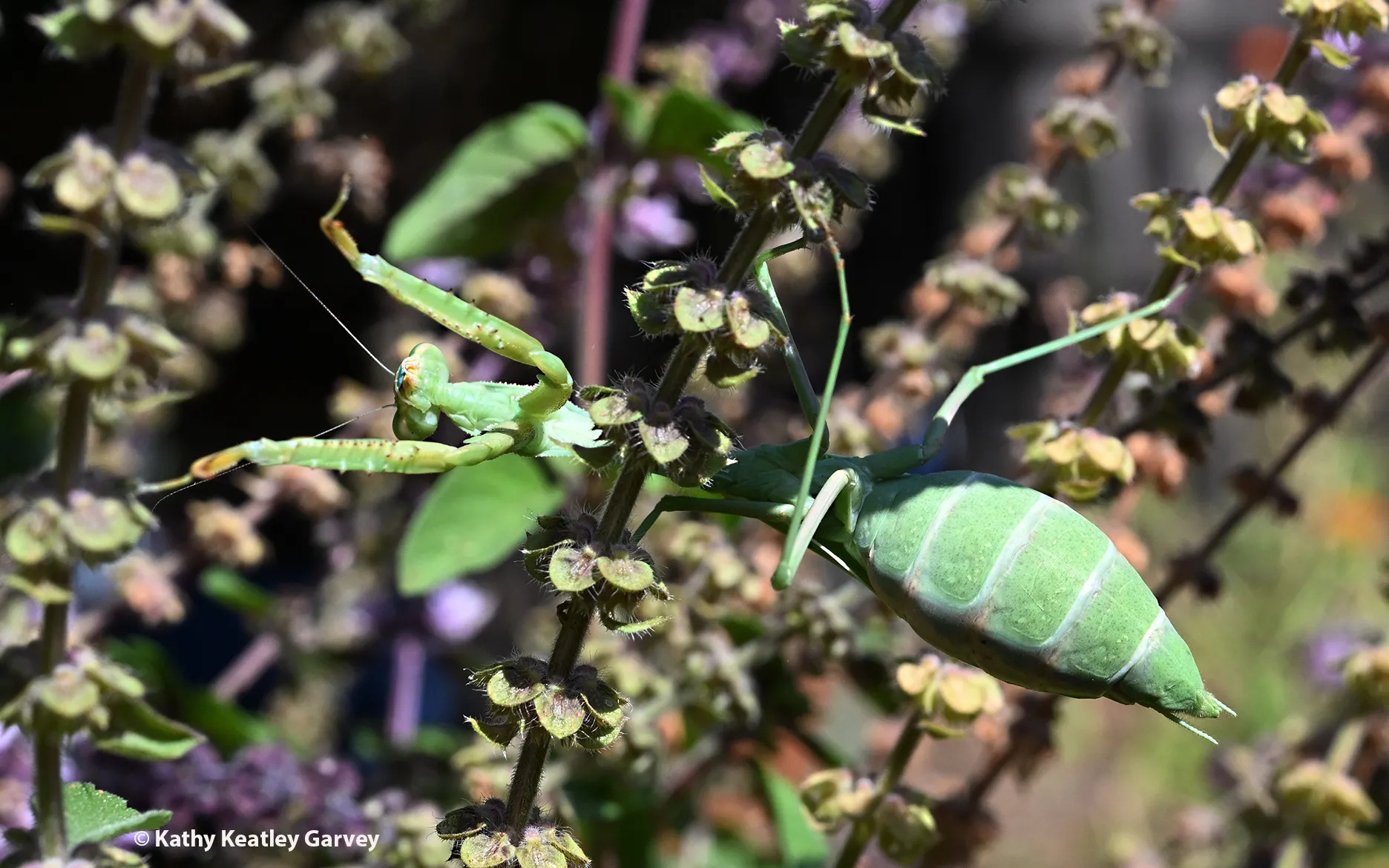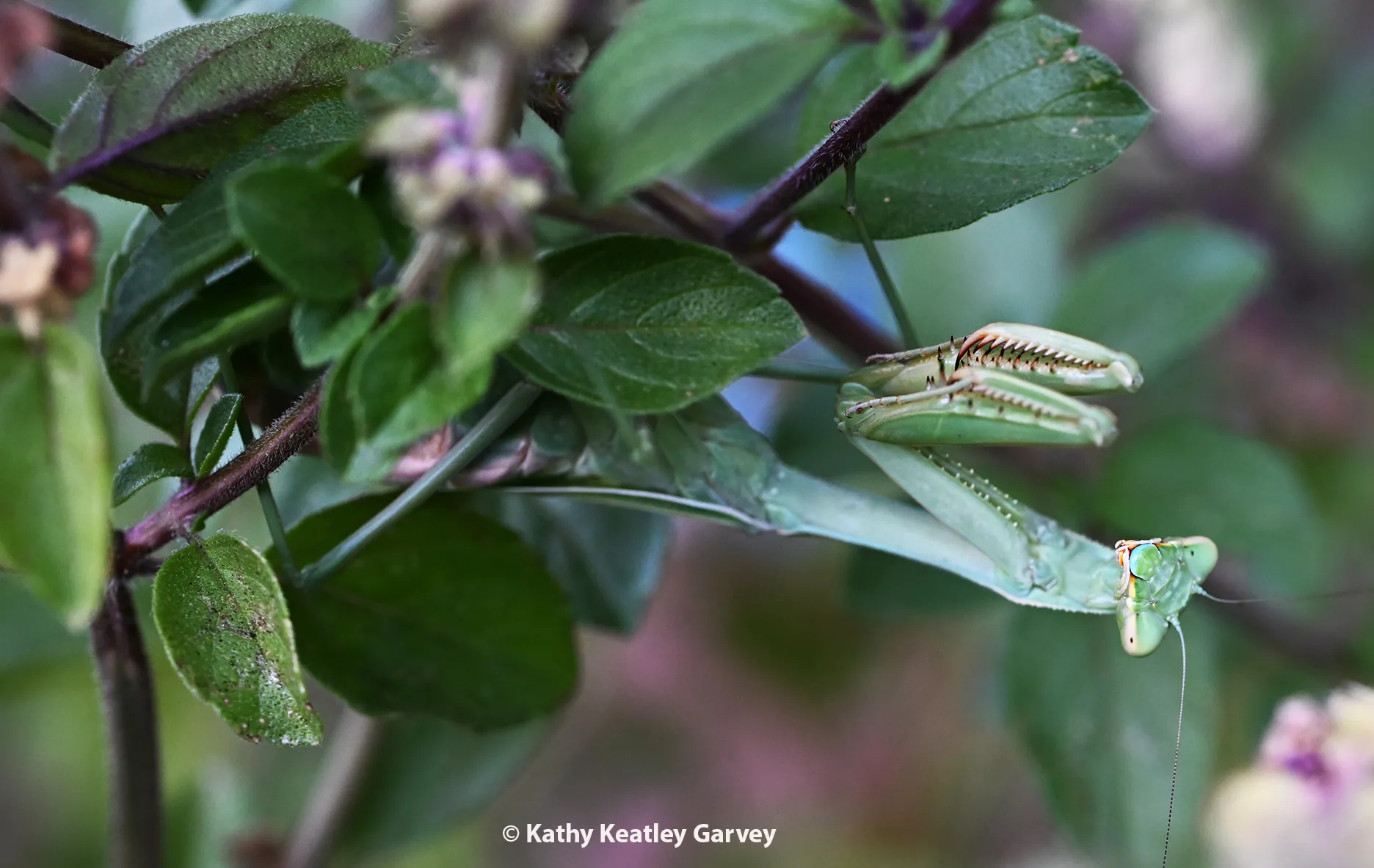What a Mantis!

There’s a “mom” in the word Stagmomantis, as in Stag-mom-antis limbata.
That genus name seems quite appropriate for a gravid mantis, don't you think?
Take the mama-to-be that's a permanent tenant in a Vacaville patch of African blue basil. She knows this is the place to "bee."
We've nicknamed her "Mama Mia." She's about to pop, or deposit her ootheca.
Native to North America with a range that includes Arizona, California, New Mexico, Texas, Colorado and Utah, this species is commonly known as “the bordered mantis” or "the Arizona mantis."
Mama Mia blends in well with the green basil leaves. Camouflaged to the core. Where is she? Is that a leaf or a mantis? Where'd she go? If you stir the leaves, sometimes she’ll move slightly. Sometimes not.
"They’re quite intentional about when they move," commented UC Davis alumnus Lohit Garikipati, a doctoral student at the Richard Glider Graduate School at the American Museum of Natural History.“And super vigilant."
Mama Mia notices me stirring the leaves, but figures "you're no predator, no harm." She’s right.
"Just getting ready to take a portrait of you, Mama Mia," I tell her. "Once you deposit that ootheca, you'll vanish, and I'll never see you again, but I may see your offspring next year if I'm lucky."
By the looks of her, she's a skilled ambush predator. She appears to have devoured her share of honey bees and native bees-- maybe more than her share.
She chose a perfect spot to do so.
We remember when UC Berkeley professor emeritus and research entomologist Gordon Frankie of UC Berkeley, and UC Davis distinguished emeritus professor Robbin Thorp (1938-2019) told us that "African blue basil is a great bee plant." Apparently S. limbata knows that, too. Anyway, Frankie and Thorp included the plant in "California Bees and Blooms: A Guide for Gardeners and Naturalists" (with Rollin Coville and Barbara Ertter).
"S. limbata is one of the largest mantids native to North America, though it is much smaller than some African and Asian mantids such as species in the genera Sphodromantis and Hierodula, "Wikipedia tells us. "Females are most often fairly plain green (often with a yellowish abdomen), but sometimes gray, or light brown, with dark spot in middle of the tegmina, which do not completely cover the wide abdomen. Hind wings may be checkered or striped yellow."
We earlier spotted a male limbata in the basil patch.
"Males are slender, long-winged, and variable in color, but most often green and brown with the sides of the folded tegmina green and top brownish (may be solid gray, brown, green, or any combination of these)," according to Wikipedia. "Abdomen without prominent dark spots on top. The wings are transparent, usually with cloudy brownish spots on outer half.,:'
The male is no longer there. He may have lost his head.

